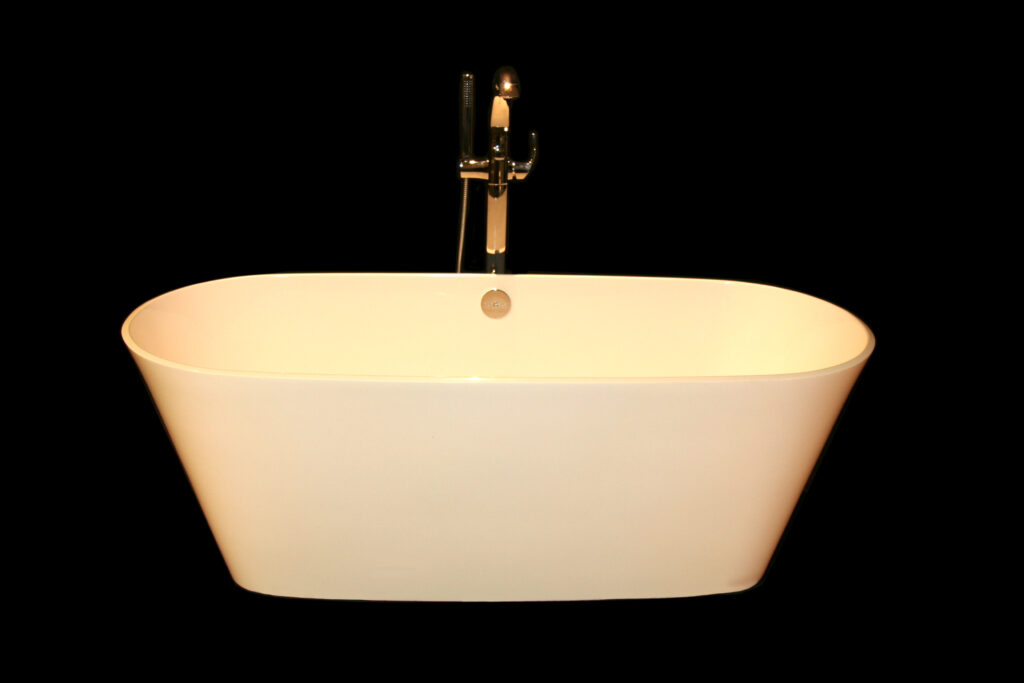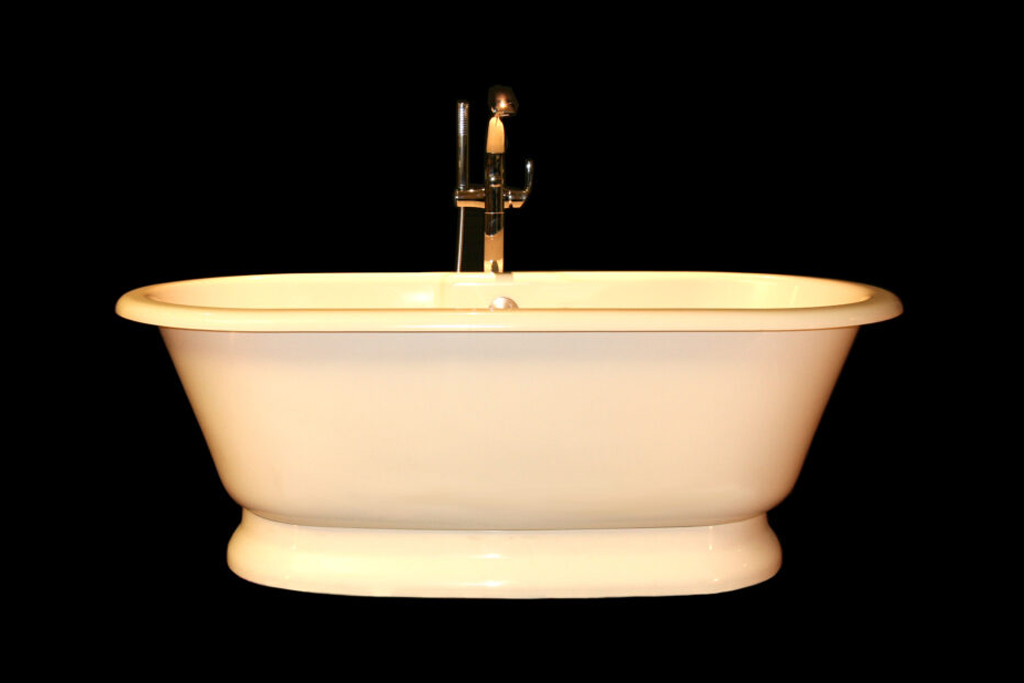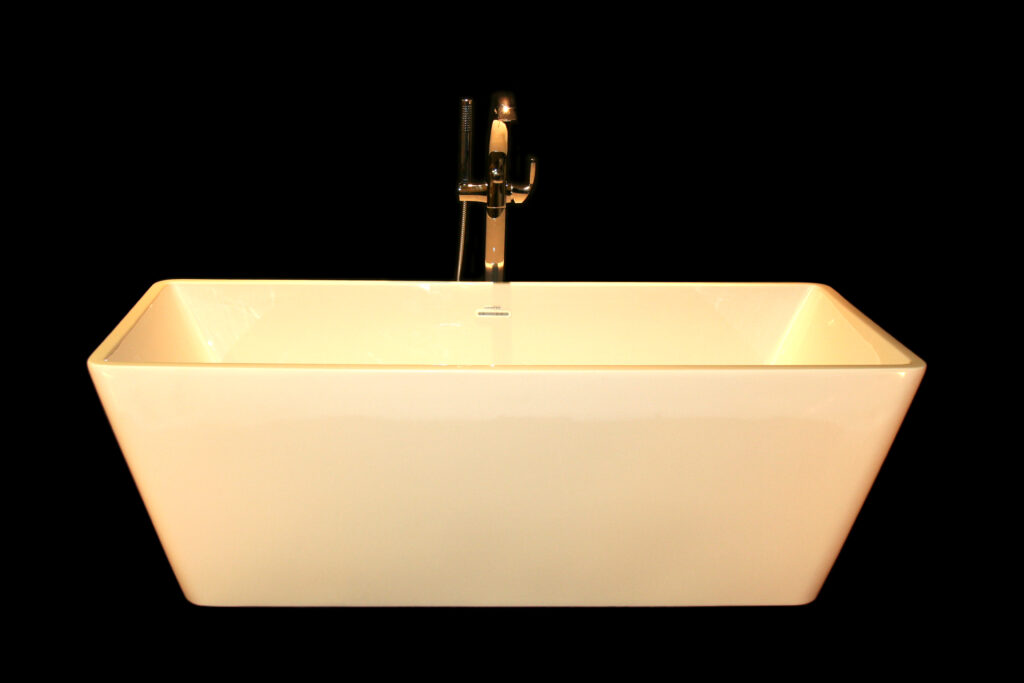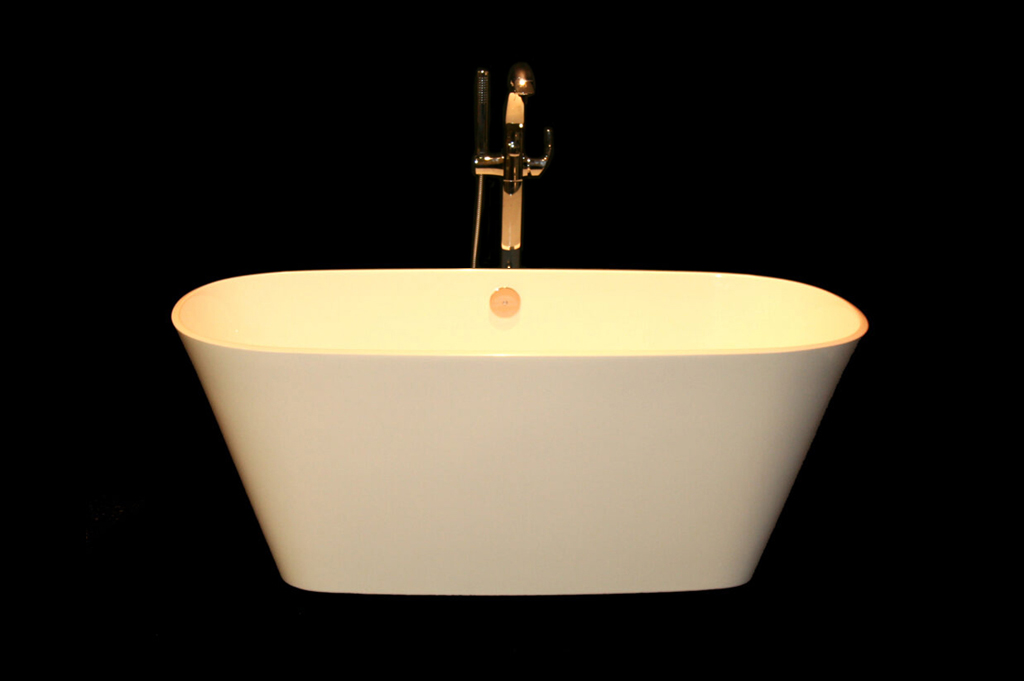Freestanding Bathtub
In the past freestanding bathtubs came with a big ticket price but lately there are some more affordable options. Besides the actual model there are factors that affect the cost for both freestanding and built-in tubs. With a freestanding tub, for example, whether the plumbing comes from the floor or the wall can result in a costly bottom line. A built-in tub generally has a more standardized plumbing requirement, which can make it more affordable. Finishes can drive up the cost of a built-in tub. You want to make sure to take into account the tile being used of the apron (the front of the tub) and material (either countertop or tile) that makes up the deck of the tub.
Central Plumbing and Heating Supply Freestanding Bathtubs:


Freestanding Tub Sizes
Like style options, sizes of freestanding tubs vary. They’re typically deeper than alcove tubs and can be longer and wider. Matching the size of the tub with the size of your bathroom is key. Be careful that you don’t go too narrow in the width, normally 32 inches fits well.
What To Consider When Shopping for a Freestanding Tub
You have the space for a freestanding tub, and now you’re ready to shop. But before you buy, consider the following:
- What it’s made of: Consider the aesthetics of the various materials and what’s required to maintain them.
- Dimensions: Let the size of your bathroom guide you in choosing a right-sized tub.
- Plumbing location: Do you need the plumbing to be at one end of the tub? In the middle? Choose a tub that matches your plumbing restrictions.
- Shape and style: Choose a shape that matches how you’ll use a tub and the design style of your bathroom.
- Weight: If you go with a heavy material like cast iron, make sure your bathroom floor can support the weight. And weight means when the tub is filled with water.


